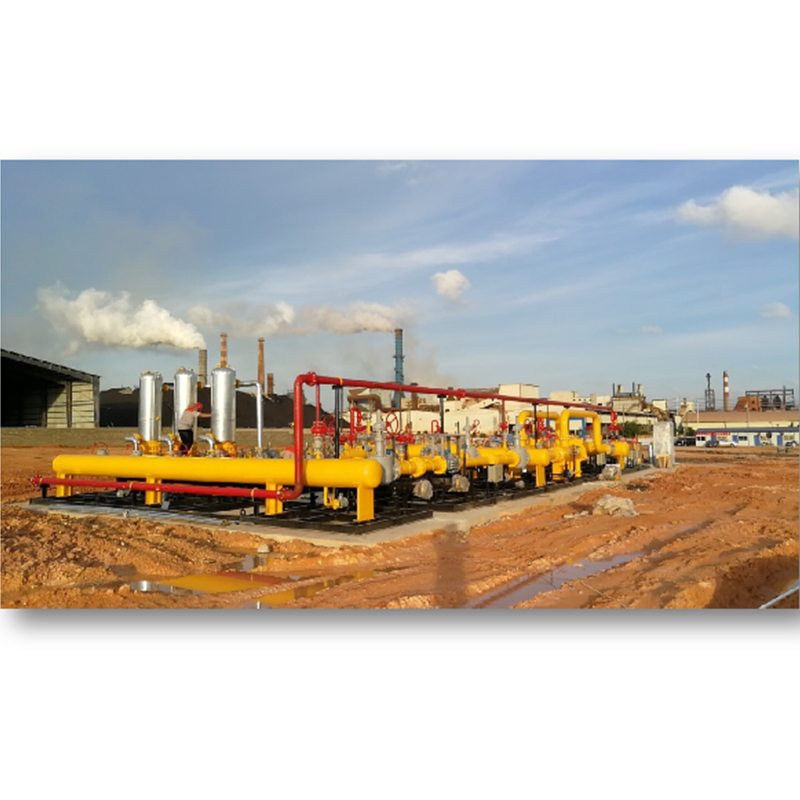
12 月 . 04, 2024 09:25
Back to list
pressure reduction skid
Understanding Pressure Reduction Skids A Critical Component in Fluid Transportation
In the oil and gas industry, efficient and safe transportation of fluids is paramount. One of the essential components in this process is the pressure reduction skid. This device plays a crucial role in managing the pressure levels of various fluids, ensuring that they are optimized for safe handling and transport. In this article, we will explore the definition, purpose, components, and benefits of pressure reduction skids, emphasizing their significance in industrial applications.
What is a Pressure Reduction Skid?
A pressure reduction skid is a pre-assembled system used to control and reduce the pressure of fluids as they flow from one location to another. These skids are built to specifications and include various components such as pressure regulators, valves, filters, and control panels, all mounted on a robust structural platform. Their primary function is to maintain the pressure within safe limits, protecting both the pipeline and the equipment involved in fluid transportation.
Purpose and Functionality
The primary purpose of a pressure reduction skid is to lower the pressure of high-pressure fluids to a desirable level required for downstream processes or distribution systems. High pressure can lead to several dangers, including equipment failure, pipeline ruptures, and even catastrophic accidents. By using a pressure reduction skid, operators can ensure that the transport of fluids, be it natural gas, crude oil, or other liquids, remains safe and reliable.
The functioning of a pressure reduction skid involves several steps
1. Intake The high-pressure fluid enters the skid through an inlet line. 2. Pressure Regulation As the fluid passes through the skid, it reaches a pressure regulator that reduces the pressure to a predetermined level. This can be controlled manually or automatically, depending on the specific design and operational requirements. 3. Filtration To protect the downstream equipment from potential contaminants, filters are often included in the skid to remove impurities from the fluid. 4. Monitoring and Control Various instruments and gauges are integrated into the skid to monitor pressure, temperature, and flow rates, providing operators with real-time data to manage the system effectively. 5. Output The processed fluid, now at a safe pressure, is directed out of the skid into the next stage of the transportation or processing system.
pressure reduction skid

Components of a Pressure Reduction Skid
A pressure reduction skid consists of several critical components
- Pressure Regulators Essential for maintaining the desired pressure levels. - Valves Control the flow of fluid and can include safety relief valves to manage excess pressure. - Filters Ensure the cleanliness of the fluid by removing particulates and contaminants. - Instrumentation Includes pressure gauges, flow meters, and temperature sensors for monitoring system performance. - Control Systems Automated or manual systems to oversee the operation of the skid and ensure optimal performance.
Benefits of Pressure Reduction Skids
1. Safety By regulating fluid pressure, skids significantly reduce the risk of accidents caused by over-pressurization. 2. Efficiency They help maintain optimal pressure levels, which enhances the efficiency of the entire fluid transportation system. 3. Cost-Effectiveness Preassembled skids can reduce installation time and costs, making them an economically viable option for many businesses. 4. Scalability Designed to be modular, pressure reduction skids can easily be expanded or modified to meet changing operational needs. 5. Compliance They help organizations meet industry regulations regarding safety and environmental protection by ensuring safe operating conditions.
Conclusion
Pressure reduction skids are an integral part of modern fluid transportation systems in the oil and gas industry. By effectively managing fluid pressure and providing safety measures, they play a vital role in ensuring operational efficiency and safety. As the industry continues to evolve, the importance of these systems will only grow, reinforcing their status as critical components in fluid management and transportation solutions. Whether in large-scale industrial applications or localized operations, understanding and utilizing pressure reduction skids is essential for success in fluid transportation.
Next:
Latest news
-
Unlocking The Quality Gas Pressure ReducersNewsNov.01,2024
-
The Role of Gas Pressure Reducing StationsNewsNov.01,2024
-
The Importance and Functionality of Safety Relief ValvesNewsNov.01,2024
-
The Essential Role of Safety Valves in Natural Gas ApplicationsNewsNov.01,2024
-
The Essential Role of Gas Pressure RegulatorsNewsNov.01,2024
-
Enhance Your Premium Gas FiltersNewsNov.01,2024

